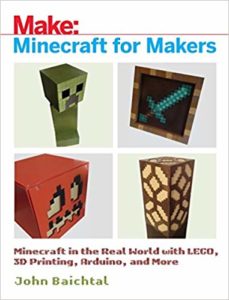Mae Among the stars by Roda Ahmed & Look Up With Me: Neil deGrasse Tyson: A Life Among the Stars” by Jennifer Berne
The summer reading program is in full swing inside the library’s children’s department. Sillies are being shaken out during weekly story times, books are flying off of the shelves and we are all learning about outer space.
Because this year’s summer reading theme is “A Universe of Stories,” I want to highlight a few of our newest and best extraterrestrial reads.
RODA AHMED’s “MAE AMONG THE STARS” has taken up permanent rotation in my son’s bedtime story lineup and has earned a place on my regular list of picture book recommendations as well.
Ahmed’s picture book is a fictionalized retelling of astronaut Mae Jemison’s childhood and her love for astronomy and the night sky.
The book begins with a young, pig-tailed Mae daydreaming about seeing Earth from outer space. As she looks out at the night sky from her front porch, her mom tells her, “If you can dream it, if you believe it and work hard for it, anything is possible.”
This refrain acts as a guiding narrative, following Mae as she builds a spaceship out of cardboard boxes, checks out astronomy books at the library and shares her dreams with her family, friends and classmates.
When a teacher encourages her to pursue a more female-centric profession, she quickly grows discouraged, but her mother’s words act as a gentle reminder to follow her dreams.
Illustrator Stasia Burrington’s softly colored ink illustrations in “Mae Among the Stars” are excellent, specifically in relation to her use of color to represent Mae’s moods. Her sadness is reflected in an icy blue color scheme; when her mom encourages her to dream big, the colors are bright, bold and almost reminiscent of the Northern Lights.
The story itself follows a simple narrative biographical arc of following your dreams regardless of naysayers, but it does so in the format of a picture book specifically for preschool and early elementary readers.
History books for this age group can often be too wordy or packed with intangible concepts such as grit or bravery, but Ahmed manages to make those concepts tangible through her simple yet clear storytelling. “Mae Among the Stars” is both an accessible biography for the youngest readers and a fun, intriguing story for all.
Another space-centric book I have been enjoying this year is JENNIFER BERNE and LORRAINE NAM’s “LOOK UP WITH ME: NEIL deGRASSE TYSON: A LIFE AMONG THE STARS.”
The astronomer is fairly well-known, in large part because of his narration of the remade documentary series “Cosmos” as well as his humorous and amiable personality in his role as director of the Hayden Planetarium in New York City and an internet sensation. As with “Mae Among the Stars,” “Look Up With Me” turns the long-winded, text-heavy biography into something more palatable for the younger, more wiggly set.
The book begins with a paper cut image of a baby Tyson in a crib while a friendly, anthropomorphic planet sits close by in a rocking chair; his parents’ shadows are visible in light spilling through the doorway. “Neil deGrasse Tyson opened his eyes, and there it was. The universe. Just waiting to be discovered,” reads Berne’s accompanying text.
The book buzzes along pleasantly, with the young Tyson portrayed as an eager and curious learner whose life was changed when he visited the Hayden Planetarium as a child. Perseverance and hard work are obvious but subtle (though never preachy) themes; Neil walks neighborhood dogs to raise money for his first real telescope, and he travels overseas at 15 to give paid speeches about astronomy.
Berne’s biography deals with the more concrete matters of Tyson’s life in the first half of “Look Up With Me,” while the latter half feels more focused on encouraging young readers to follow their dreams.
However, Berne roots these details in scientific realities (“Shooting stars are really meteors entering Earth’s atmosphere. And most of them are smaller than a blueberry!”), an effect that makes the book feel less moralistic than it might otherwise be.
Nam’s paper cut images are exceptional and put this biography miles ahead of its bookish peers.
Finally, I would be remiss if I didn’t encourage you to sign up for the all-ages summer reading program online or on our website (www.joplinpubliclibrary.org). We have events nearly every day in the children’s department, as well.
Find Mae Among the Stars and Look Up With Me in our catalog.




